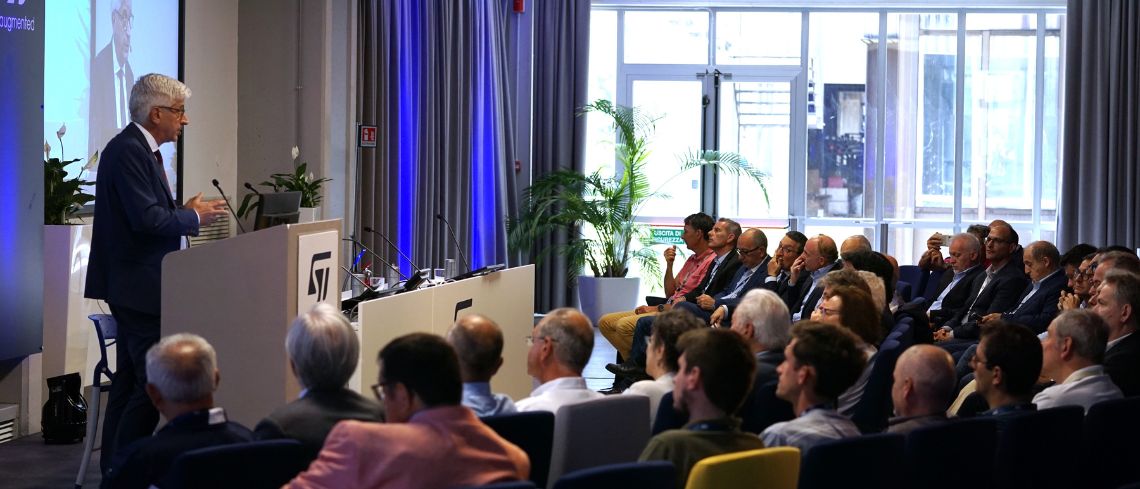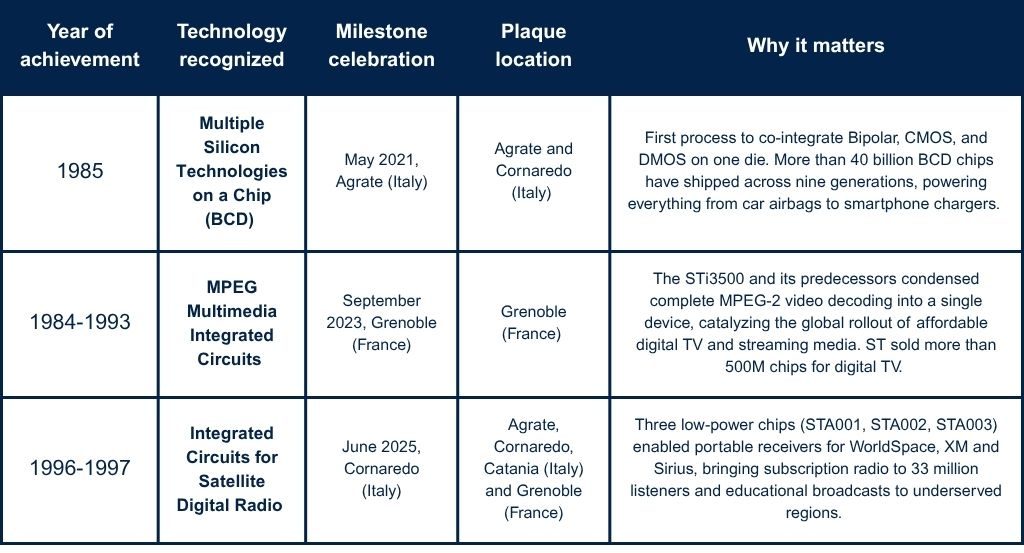In 1799 Alessandro Volta showed the world how to store electricity, and a century later Guglielmo Marconi proved that radio waves could be transmitted across oceans. IEEE Milestone Plaques commemorate those breakthroughs and hundreds more, reminding us that progress happens when bold innovation, commercialization into products, and benefit to society converge. In June 2025 STMicroelectronics received its third plaque, following the ones for the BCD silicon process (2021) and the MPEG video decoder (2023). The third plaque recognizes the system of integrated circuits that made Satellite Digital Radio a commercial and humanitarian reality. The story behind ST milestones is an example of the dedication and teamwork that drive our labs.
IEEE Milestones: how great ideas earn a bronze plaque

Established in 1983, the IEEE Milestone program recognizes technical achievements at least 25 years old that changed the way the world works. A proposal must document the invention’s historical context, its novelty, and a tangible benefit for humanity. It is then challenged by an IEEE advocate for about a year, reviewed by IEEE History committee and, to conclude the evaluation process, ratified by subject-matter experts before the IEEE Board of Directors final decision. Only about 240 milestones have been awarded to date, including Volta’s first battery (1799), Marconi’s wireless experiments (1895), and the invention of the transistor at Bell Labs (1947). The IEEE plaques recognize past inventions, but they are also meant to inspire those of the future.

Each plaque belongs to a different product domain (smart power, consumer multimedia, and connectivity) but the pattern is the same: anticipate a technology change with new solutions, cross-functional ST technical experts, and a willingness to provide support for decades after the first silicon ships.
The newest chapter: integrated circuits for satellite digital radio
What was the breakthrough?
In the mid-1990s, the United Nations called for supporting an initiative aimed to deliver educational content, news, and public-health programs via satellite to remote and underserved communities, particularly across Africa and Asia, where traditional broadcasting infrastructure was lacking or unreliable.
Worldspace, a now-defunct satellite radio broadcasting company, embraced such a challenge by providing satellite infrastructure. However, turning this ambition into a scalable and sustainable service required hardware innovation: the satellite radio receivers needed to be compact, energy-efficient enough to run on batteries, and low-cost enough for widespread adoption. At the time, typical satellite radio receivers relied on bulky and expensive discrete components, making them unsuitable for mass-market deployment.
STMicroelectronics stepped up with an innovative system solution: a fully integrated chipset called “STARMAN” comprising three custom-designed integrated circuits that together handled the full signal chain, from satellite signal capture to audio playback. This chipset marked a significant advancement in system integration and efficiency.
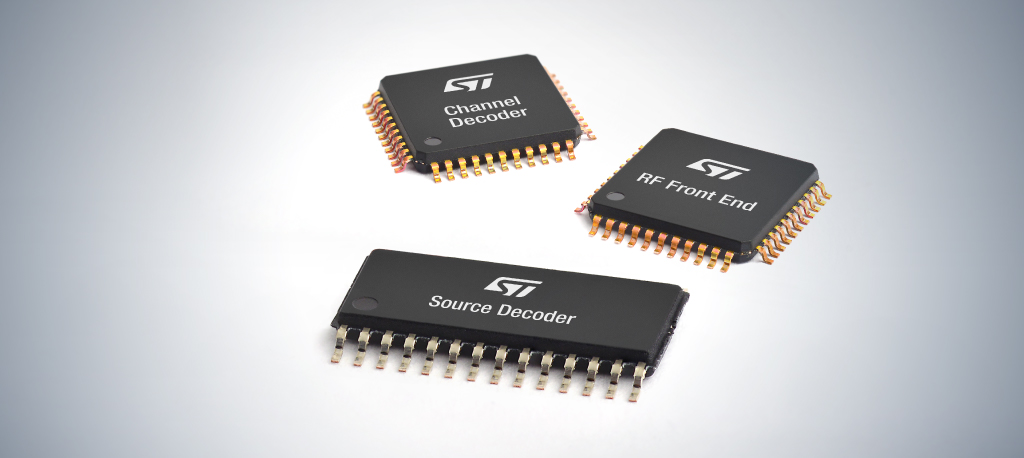
- The STA001 was the first fully integrated L-band RF front-end for satellite digital radio. It replaced several analog components with a compact, low-power silicon design that could receive satellite signals even in difficult conditions.
- The STA002 acted as the digital baseband processor. Built using CMOS technology, it integrated key functions including QPSK (quadrature phase shift keying) demodulation, Viterbi decoding, and Reed-Solomon error correction, tasks previously handled by multiple chips or custom ASICs. This integration dramatically simplified receiver design and reduced both cost and power consumption.
- The STA003, an MPEG Layer III (MP3) audio decoder converted the compressed digital audio stream into high-quality sound. Its performance and efficiency were so strong that it later became a popular standalone chip for early MP3 players, contributing to the rise of digital music.
Together, these three chips reduced total power consumption by over 50% and cut the bill of materials cost by nearly two-thirds compared to existing discrete alternatives. Their design also significantly shrank the receiver footprint, making it possible to develop battery-powered, portable satellite radios for consumers and humanitarian use alike. This level of system-on-chip innovation led to WorldSpace’s success and for the later commercial satellite radio services such as XM and Sirius in the United States.
Behind the scenes: how was it developed?
Developing the STARMAN chipset was possible thanks to collaboration across different teams at a time when modern communication tools were far more limited than today. Engineers from ST sites in Agrate, Catania, Cornaredo, Grenoble worked together as a concurrent engineering team, exchanging design drafts through couriers, since dial-up internet connections couldn’t securely handle sensitive files.
The team faced tight time pressure: on the eve of the final submission to WorldSpace, a computer crash deleted their proposal. Only thanks to printed backups and a sleepless night retyping the entire document were they able to meet the deadline. Winning the first customer required the same level of determination: ST marketers rushed a signed contract to the courier before closing time in the US, then flew to Germany to negotiate funding, missing their return flight in the process but secured the program.
Also, confidence in the team had to be earned. Some partners were initially uncertain about the ambitious timeline, but ST’s engineers responded with commitment, collaborating across sites and maintaining a strong focus on delivering a successful solution on their first attempt.
Why did the IEEE recognize it?
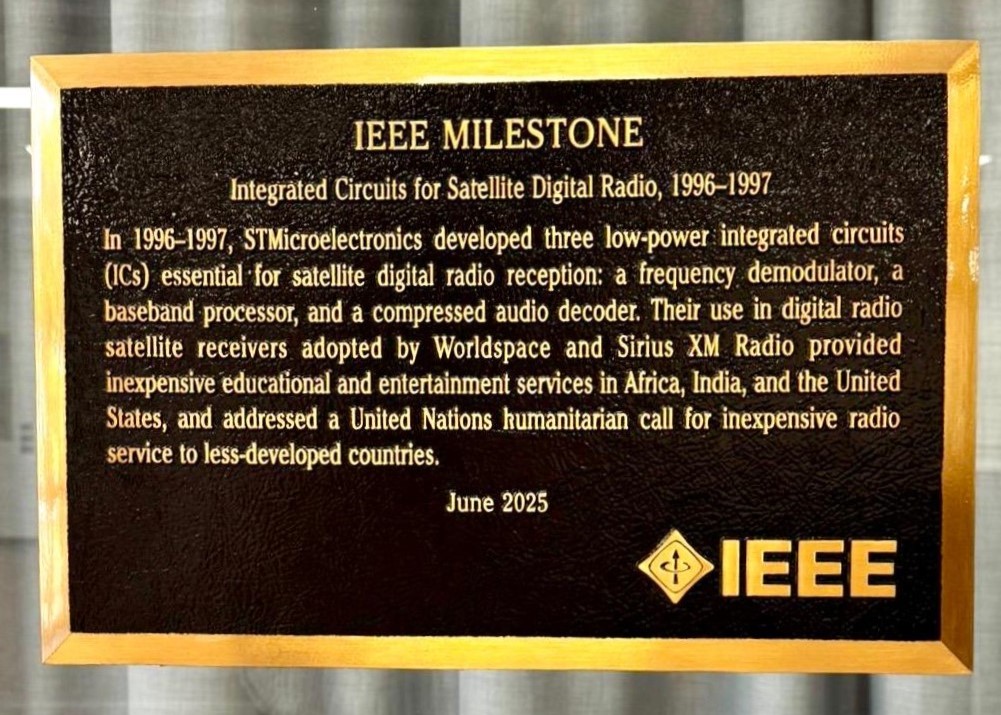
IEEE ratified the Satellite Digital Radio as a milestone due to its technical and social impact. This invention delivered unprecedented technical performance, energy efficiency, and cost-effectiveness. It achieved high sensitivity for satellite reception while consuming minimal power, making it suitable for portable devices. At the same time, its architecture significantly reduced the bill of materials, opening the door to mass-market deployment.
A notable achievement was that in underserved regions of Africa and India, the receivers powered by ST’s chipset allowed WorldSpace to broadcast educational content, from farming techniques to health and literacy programs. Meanwhile, the same core technology enabled the launch of XM Radio in the United States, bringing subscription-based satellite radio to tens of millions of listeners. Over the years, the satellite radio chipsets generated more than $1.5 billion in cumulative silicon revenue for ST and continues to evolve. The latest generation, built on ST 28nm FDSOI technology, still carries the essence of the original one: reliable, efficient, and instantly ready to play.
Milestones as waypoints, not finish lines
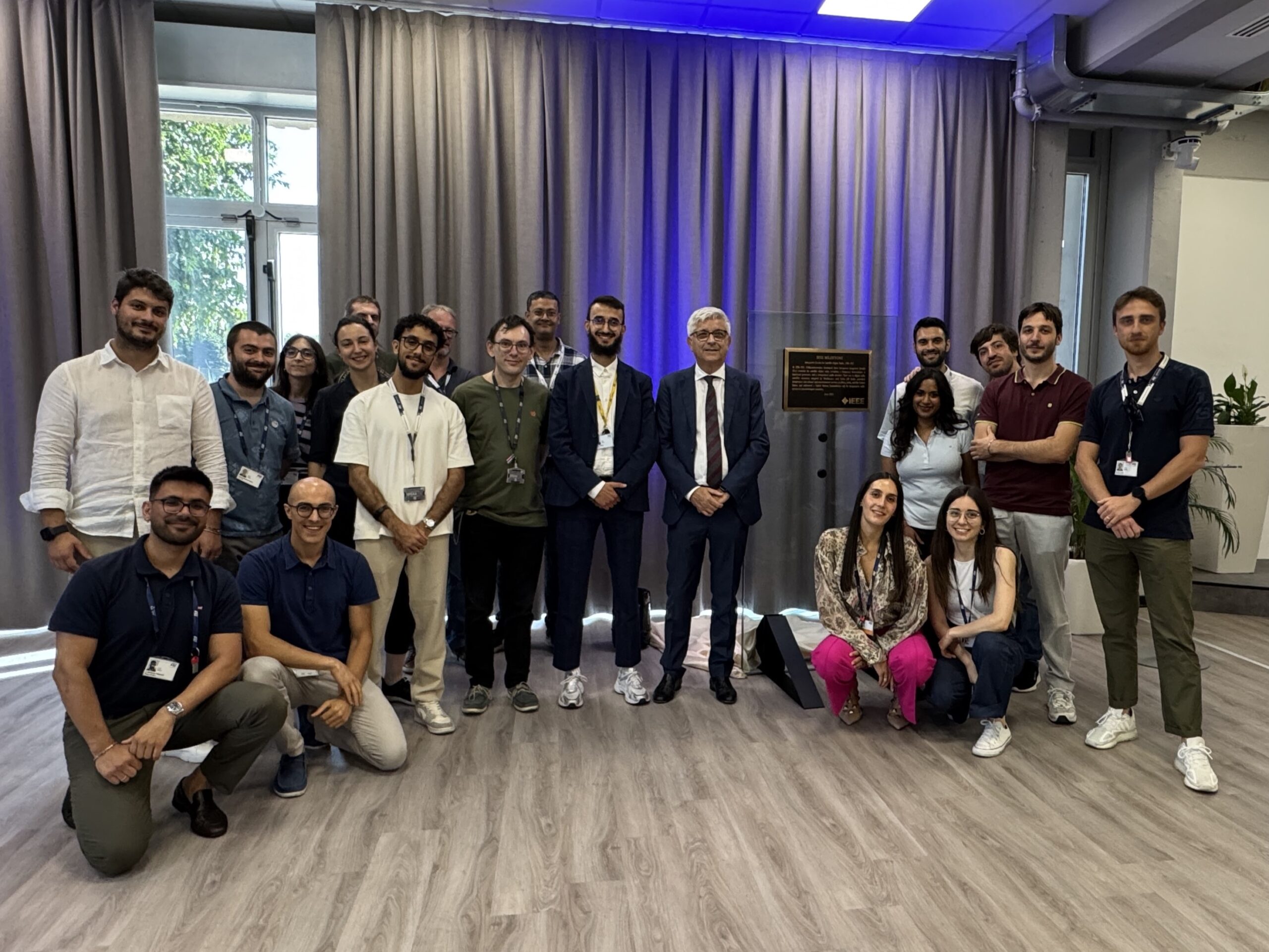
While three plaques in four years are an unprecedented, breath-taking achievement, they are only a starting point for the next journey. BCD shows how to implant heterogeneous Bipolar-CMOS and DMOS transistors on a common substrate; MPEG chips remind that owning key hardware IP accelerates entire ecosystems; and Satellite Digital Radio is an example of how pairing humanitarian purpose with solid business logic can unlock markets nobody thought existed. These solutions demonstrate that curiosity and collaboration are essential ingredients in the recipe for innovation and can serve as inspiration for future generations of innovators in ST.
- Discover more on our radio receivers
- Find out more about BCD technology
